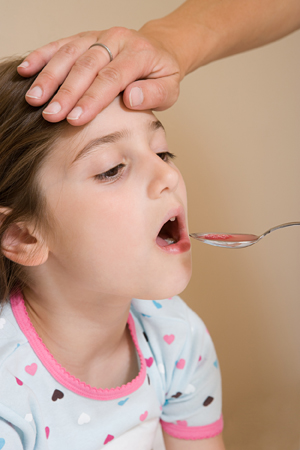Kid Care: Ear Problems
Kid Care: Ear Problems
Earaches are common in young children. When ear problems are due to swimmer’s ear or wax buildup, they can sometimes be taken care of at home. A middle ear infection needs a health care provider’s care.
Evaluating the Problem
Ear problems are due either to a middle ear infection, an external ear canal infection (swimmer’s ear), or wax buildup. Gently wiggle the outside of your child’s ear. If pain increases when the outer ear is wiggled, your child may have an external infection. If your child can’t hear well, use a penlight to look inside the ear. Check for wax buildup. If your child has fever or severe pain, those are signs of a serious ear problem. Call your health care provider.
Relieving Symptoms
You can help relieve discomfort until the condition clears up or until you can get to a healthcare provider. Antibiotics may be needed in some cases. You can begin pain treatment by using a nonaspirin pain reliever, such as acetaminophen or ibuprofen.
Preventing Future Problems
There are things you can do to help avoid more ear problems in the future. You can:
Reduce your child’s exposure to cigarette smoke.
Bottle-feed only when your child is sitting up, not lying down.
Unless your child has ear tubes or a hole in the eardrum, keep the ear canal dry after swimming by placing a few drops of alcohol in the ear.
Avoid putting any rigid object (such as a cotton swab) in the ear, even to clean it.
When to Call Your Doctor
Middle ear infections and all ear injuries need medical attention. Call your health care provider if you notice any of these signs or symptoms in an otherwise healthy child:
Fever:
In an infant under 3 months old, a rectal temperature of 100.4°F (38.0°C) or higher
In a child 3 to 36 months, a rectal temperature of 102°F (39.0°C) or higher
In a child of any age who has a temperature of 103°F (39.4°C) or higher
A fever that lasts more than 24-hours in a child under 2 years old, or for 3 days in a child 2 years or older
Your child has had a seizure caused by the fever
Cold symptoms such as a runny nose with green mucus
Severe ear pain, or an ear that feels hot to the touch
Any kind of discharge from the ear
Aching or ringing ears, dizziness, or nausea after an injury to the head
The possibility of an object in the ear
Persistent itching in the ear
Ear pain that gets worse or doesn’t go away after a few days
Updated:
March 21, 2017
Sources:
Vorvick LJ, Schwartz S. Hearing Loss. MedlinePlus 2010; http://www.nlm.nih.gov/medlineplus/ency/article/003044.htm. Accessed April 6, 2011., Vorvick LJ, Schwartz S. Mastoidectomy. MDConsult Patient Education 2010; http://www.mdconsult.com/das/patient/body/239056726-3/0/10041/30402.html?preview&... Accessed April 11, 2011., Wald ER. Acute Mastoiditis in Children: Treatment and Prevention. UpToDate 2010; http://www.uptodate.com/contents/acute-mastoiditis-in-children-treatment-and-prevention... Accessed April 11, 2011., Weber PC. Evaluation of Hearing Loss in Adults. UpToDate 2010; http://www.uptodate.com/contents/evaluation-of-hearing-loss-in-adults?view=print. Accessed April 6, 2011., Weinberger PM, Terris DJ. Otolaryngology : Head and Neck Surgery. In: Doherty GM, ed. Current Diagnosis & Treatment Surgery. 13th ed. New York: McGraw Hill; 2010:224-258.
Reviewed By:
Fraser, Marianne, MSN, RN,Janas, Janice D, MD,Landers, Stephen A, MD
